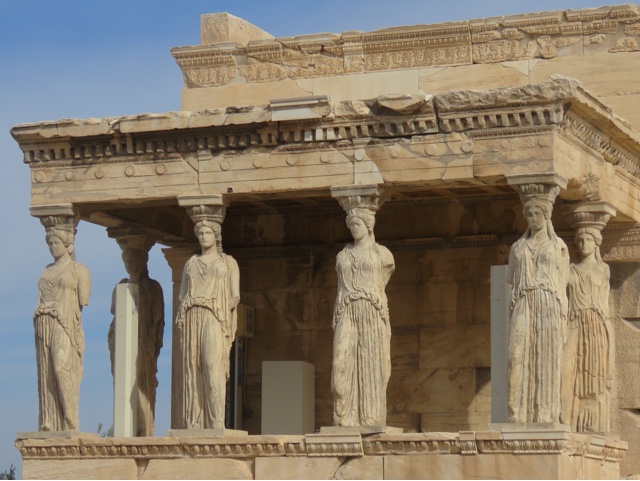Disembarking from a wonderful week on Windstar we now have a couple of days to explore Athens more. Eric and I took advantage of the beautiful weather and spent some more time exploring the lanes of the Anafiotika just below the Acropolis. The narrow lanes and steep stairs with the small whitewashed homes are an appealing escape from the hustle and bustle of the city yet only steps away. Further exploring took us to the Panathenaic Stadium more often referred to as the Olympic Stadium. Built originally in the fourth century BC it was rebuilt by th Romans in the second century AD using the same Pentelic marble used in the Parthenon. It was restored to its Roman condition in preparation for the first modern Olympics in 1896. In 2004 it provided a grand finish for the marathon in the Athens Olympics. The stadium seats 45,000 people and it was quite something to trod the ground where so many athletes have competed over the centuries. We strolled through the beautiful National Gardens and watched the changing of the guards at the tomb of the unknown soldier in honor of the great battles in Greek military history.
On our second day in Athens we started our Rick Steves tour with our visit to the Acropolis. The Acropolis has been the heart of Athens since the beginning of recorded time. Athena, the patron goddess of the city was worshipped here from 800BC on but everything changed in 480BC when the Persians invaded Greece. The citizens of Athens evacuated and all the temples on the Acropolis were burned to the ground. In the end the Greeks found themselves victorious. By 450 BC Athens was at its peak of power and as the Acropolis was a blank canvas, led by the visionary architect Pheidias the Athenians built a complex of super sized ornate temples on the Acropolis with the largest being the Parthenon. Soon after entering the site we were treated to the site of the Theatre of Dionysus which is a 5000 seat amphitheater built in the Roman times. Originally erected in 161 AD restoration has returned it to such a spectacular state that it is used for perfs today and in fact they were doing sound checks when we were there. Winding uphill one passes through the buildings of the Propylaea to step out on to the top of the Acropolis where the Parthenon is revealed in its full splendor. There is massive preservation work going on so there was a lot of scaffolding in places but not enough to take away from the work of art that this ancient temple is. Its sheer size is amazing when one realizes that it was built nearly 2500 years ago. What an engineering feat. The nearby Erechtheion with its porch with six maiden statues was a favorite of mine. The crowds were quite overwhelming as the morning progressed but definitely a visit that could not be missed. We went to the Acropolis Museum which is an architectural wonder in itself and holds a wealth of artifacts uncovered from the site.
After a lunch at a sidewalk cafe Eric and I explored the ancient Agora which was truly the heart of ancient Athens. This was the hub of all commercial, political and social life in the city. Today it remains a very active social and economic area loaded with shops and restaurants around the actual ancient Agora site. While the ruins of the homes and shops interspersed with ancient statues are amazing the highlight was the Temple of Hephaistos which was completed in 415 BC. Much of the roof is still intact as are many of the reliefs around the top. Simply magnificent.
Eric is trying out one of the chairs reserved for Royalty to watch the games from.
Statue in the stadium depicting the young athlete ready to compete and the elder who will judge. Left from Roman times.Just a small part of the Parthenon
Temple of Caryatids
Lion statues from BC

























No comments:
Post a Comment